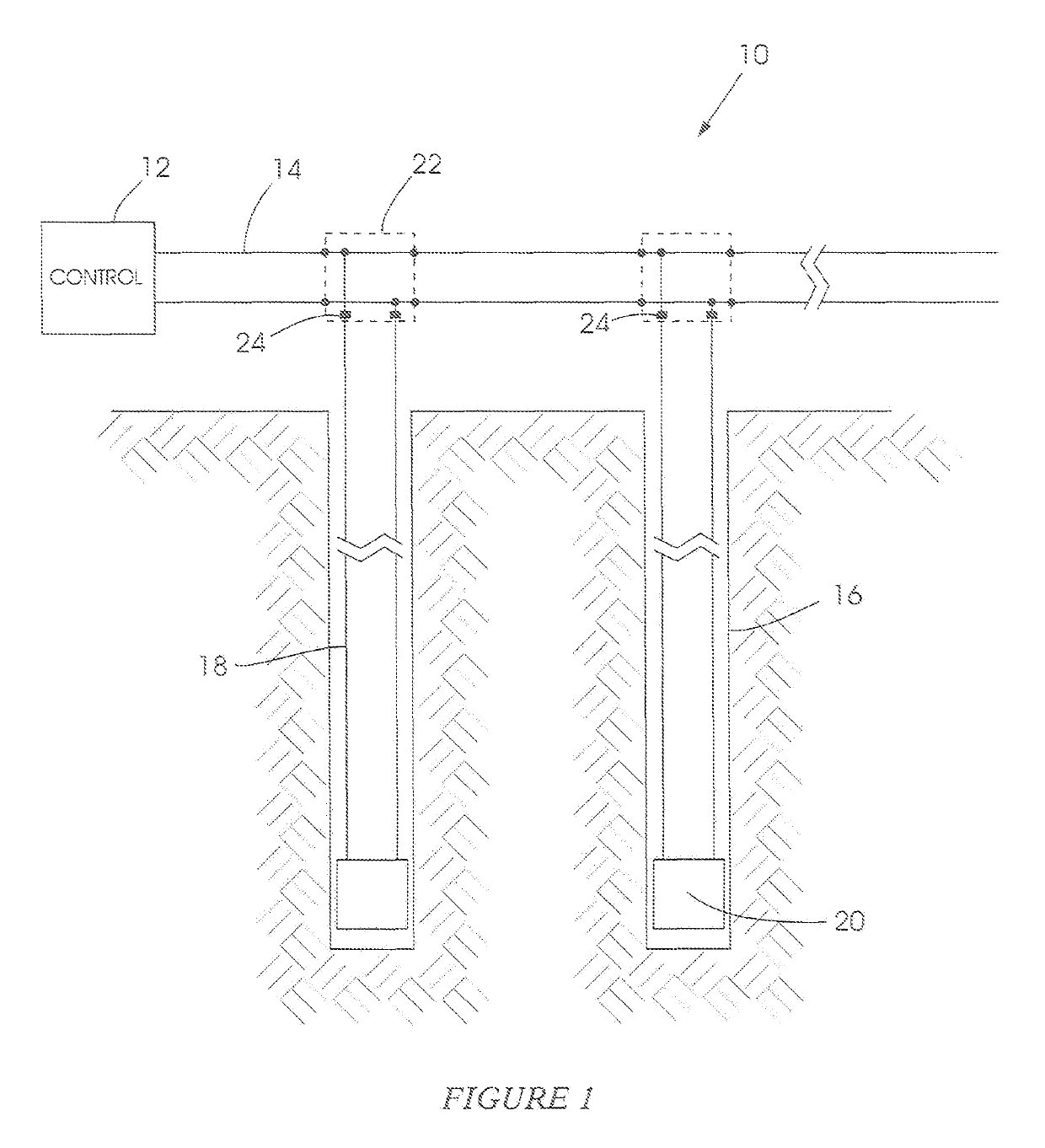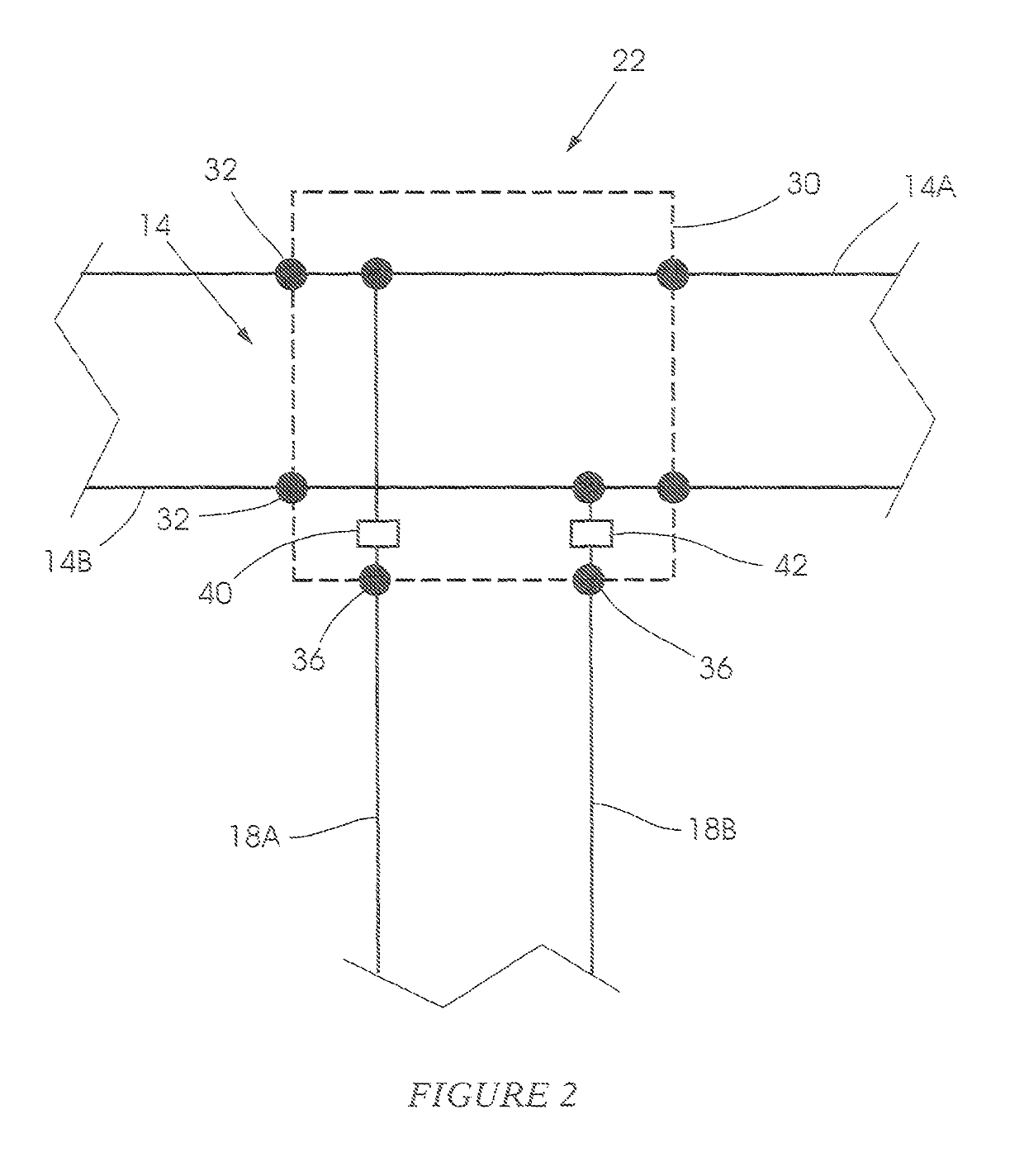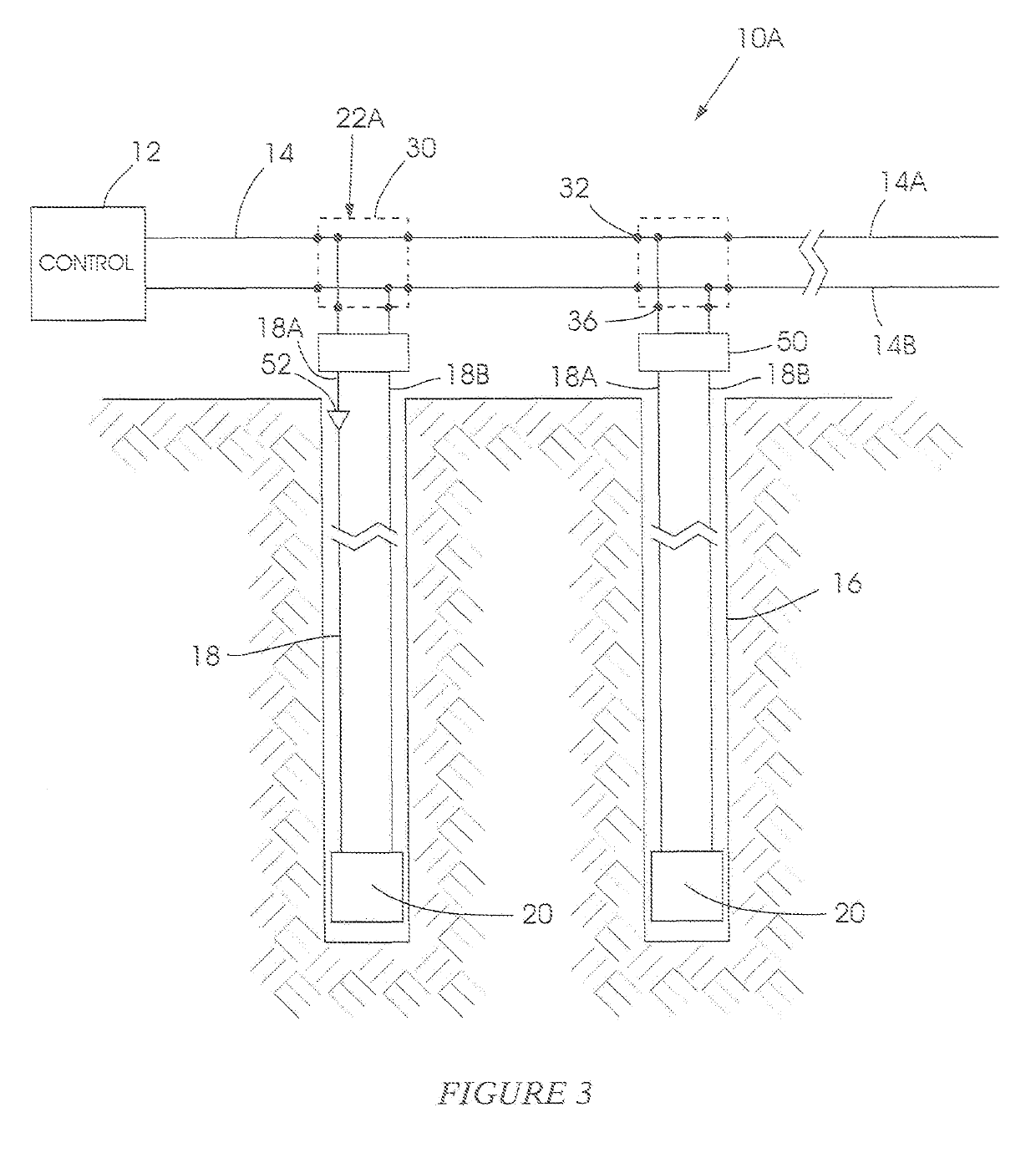Electronic detonator leakage current restriction
a technology of leakage current restriction and detonator, which is applied in the direction of electronic switching, blasting, electric devices, etc., can solve the problems of severe voltage starvation, short circuit of capacitors, and high current consumption, and achieve the effect of minimizing the effect of a problem blast hole and minimizing the effect of a leakage circui
- Summary
- Abstract
- Description
- Claims
- Application Information
AI Technical Summary
Benefits of technology
Problems solved by technology
Method used
Image
Examples
Embodiment Construction
[0040]FIG. 1 of the accompanying drawings illustrates a blasting system 10 which includes a blasting control machine 12, an elongate wire bus 14 which typically is located on surface and which is connected to the machine 12, a plurality of boreholes or blast holes 16, a plurality of detonator down-hole harnesses 18, a plurality of electronic detonators 20 and a plurality of connectors 22. The connectors 22 are shown in FIG. 1 in dotted outline, for ease of reference and, similarly, in FIGS. 2 and 3.
[0041]Each connector 22 is used to make a respective connection between the bus 14 and an associated down-hole harness 18 which, in turn, is connected to a respective detonator 20. In this way the detonators are connected in parallel to each other via the bus 14.
[0042]Each detonator 20 includes electronic elements and, typically, a custom designed control circuit (ASIC) (not shown), all mounted inside a detonator can, as is known n the art.
[0043]Explosive material, not shown, placed in ea...
PUM
 Login to View More
Login to View More Abstract
Description
Claims
Application Information
 Login to View More
Login to View More - R&D
- Intellectual Property
- Life Sciences
- Materials
- Tech Scout
- Unparalleled Data Quality
- Higher Quality Content
- 60% Fewer Hallucinations
Browse by: Latest US Patents, China's latest patents, Technical Efficacy Thesaurus, Application Domain, Technology Topic, Popular Technical Reports.
© 2025 PatSnap. All rights reserved.Legal|Privacy policy|Modern Slavery Act Transparency Statement|Sitemap|About US| Contact US: help@patsnap.com



